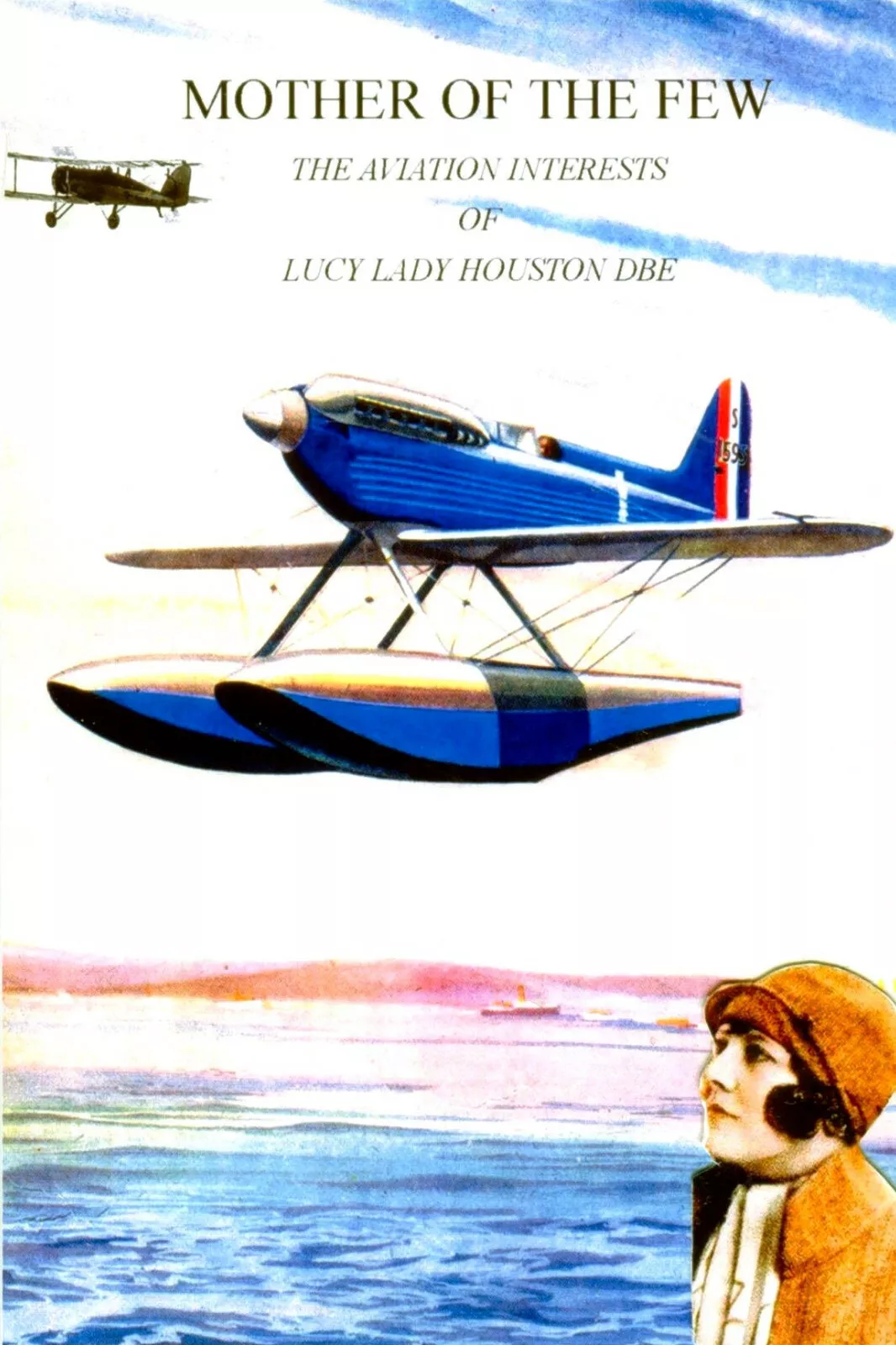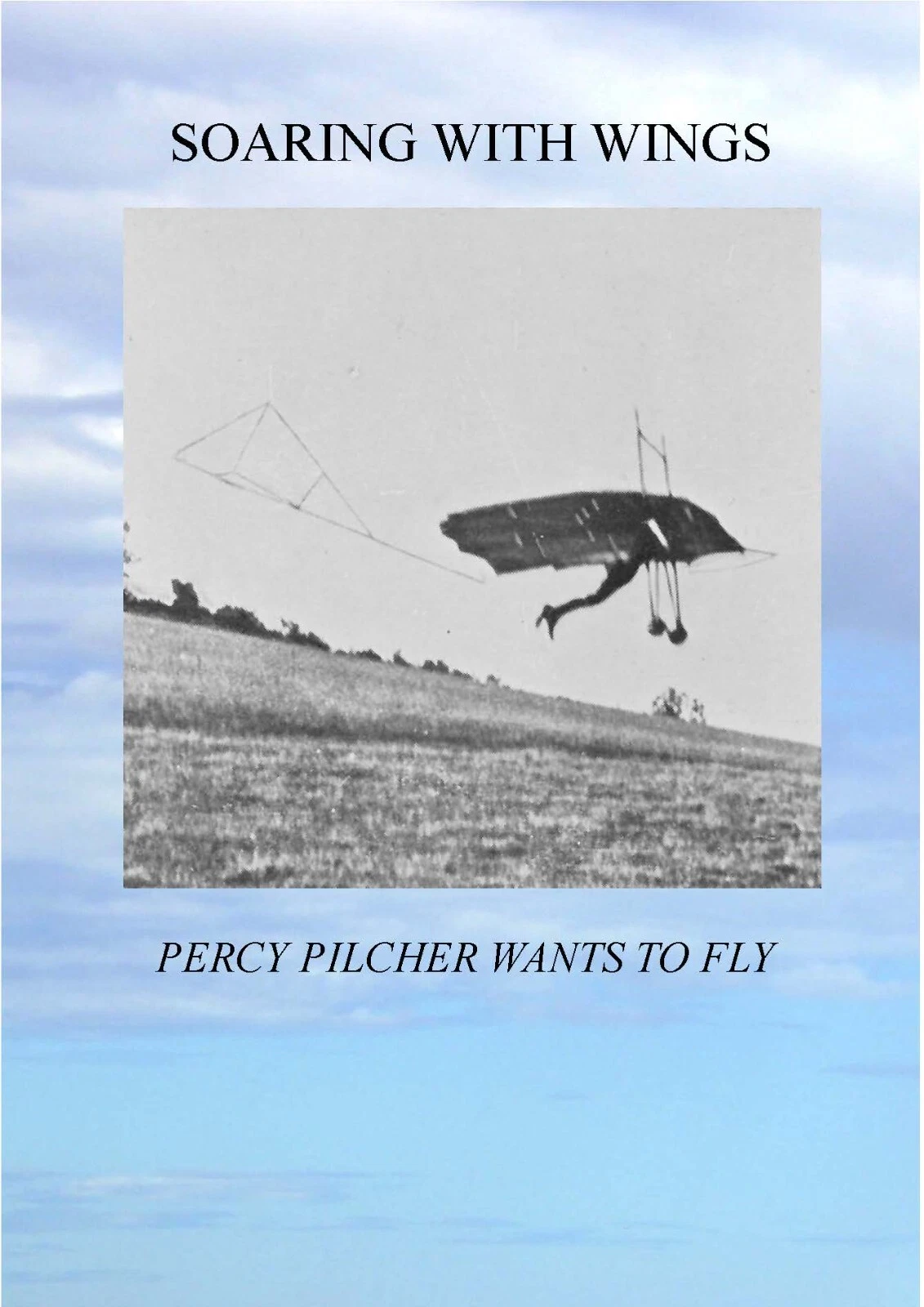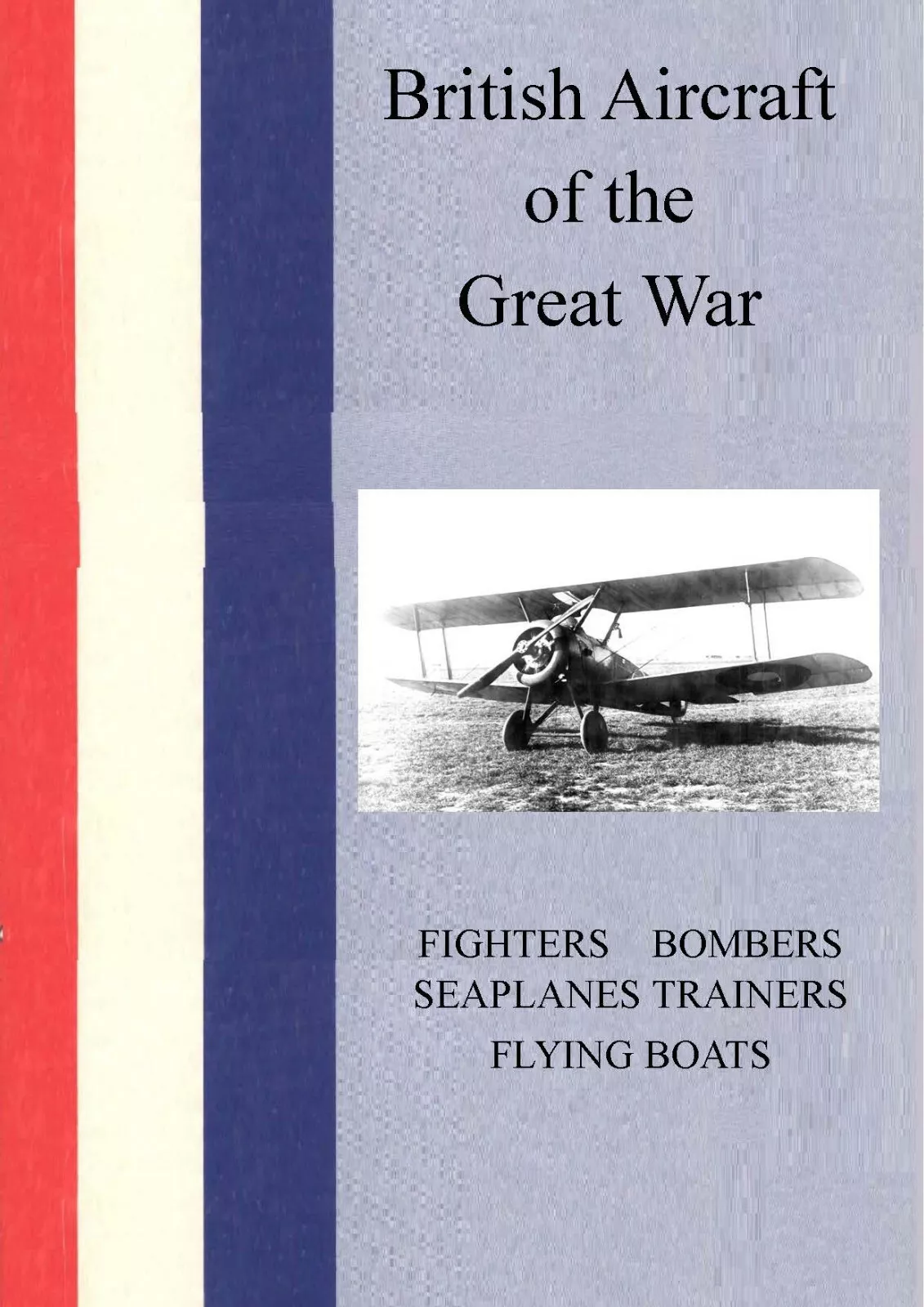Lucy Lady Houston: The Woman Who Saved the Schneider Trophy - Expert analysis by Charles E. MacKay
Introduction: The Woman Who Saved the Schneider Trophy
Lady Lucy Houston stands as one of aviation history's most remarkable patrons - a wealthy British widow whose personal intervention saved Britain's participation in the 1931 Schneider Trophy race and, in doing so, preserved the development program that would lead directly to the Supermarine Spitfire. When the government withdrew funding, Houston stepped forward with £100,000 to ensure British aviation supremacy. Based on comprehensive research documented in Charles E. MacKay's authoritative work Mother of the Few: The Aviation Interests of Lucy Lady Houston, this analysis presents the complete story of how private patronage saved Britain's Schneider Trophy program and influenced aviation history.
The book Mother of the Few is in three sections profusely illustrated with rare pictures and drawings, not a download of internet articles but carefully researched. The first section, Part One, deals with the life and loves of Lucy Houston, the second part examines the Schneider Trophy and the last part the Flight over Everest. The last two sections are supported by an appendix and supplement. This comprehensive 287-page A5 work with 78,000 words provides detailed coverage of Lucy Houston's aviation interests and their profound impact on British aviation development.
Houston's intervention in 1931 represented more than financial support - it demonstrated the critical role private patronage could play in aviation development. Her funding enabled Supermarine to continue developing high-speed aircraft technology that would prove essential when war clouds gathered over Europe.
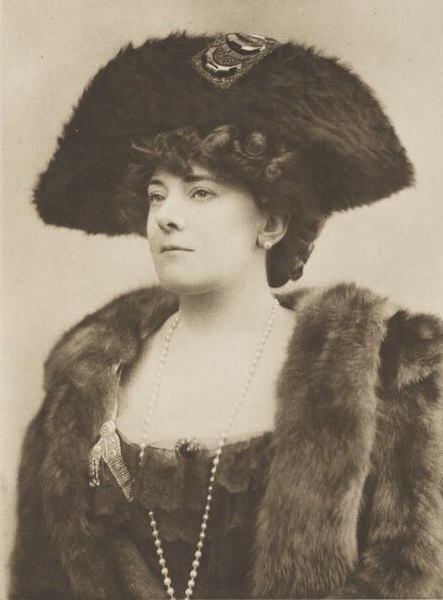
The story of Lady Houston and the Schneider Trophy illustrates how individual determination and vision can change the course of aviation history. Her decision to fund Britain's 1931 entry ultimately contributed to saving the nation during the Battle of Britain, as the Spitfire's development directly benefited from Schneider Trophy technology.
The Schneider Trophy: Technical Development and Competition
Part two explores the Schneider Trophy with new information on Brinton and the fates of the aircrew and their seaplanes. It shows the development of the "R" engine in relation to Stainforth the air race and how it was developed from the Rolls-Royce Buzzard and became the Rolls-Royce Merlin. The fuels were a winner with the engine and they too are described. This comprehensive coverage demonstrates how the Schneider Trophy program drove engine development that would prove crucial for wartime aircraft.
The book describes fully the evolution of the Rolls-Royce Merlin, the Vickers Supermarine Spitfire and the fate of Stainforth. The evolution of the Rolls-Royce "R" engine and the Supermarine S.6 series designed by R J Mitchell are fully described as are the other racing seaplanes such as the Curtiss and the Gloster and their engines. The Napier Lion and the Bristol Mercury are not neglected. This comprehensive technical coverage ensures that the complete story of Schneider Trophy technical development is properly documented.
The development of the "R" engine from the Rolls-Royce Buzzard to become the Rolls-Royce Merlin represents one of aviation's most significant engine development stories. The Schneider Trophy program provided the testing ground for engine technologies that would prove essential for wartime aircraft. The comprehensive documentation of this engine evolution ensures that the technical foundations of British aviation power are properly understood.
The fuels developed for the "R" engine represented significant advances in aviation fuel technology. These specialized fuels enabled the high performance necessary for Schneider Trophy competition and contributed to the development of fuels that would power wartime aircraft. The comprehensive documentation of fuel development ensures that this crucial aspect of aviation technology is properly recognized.
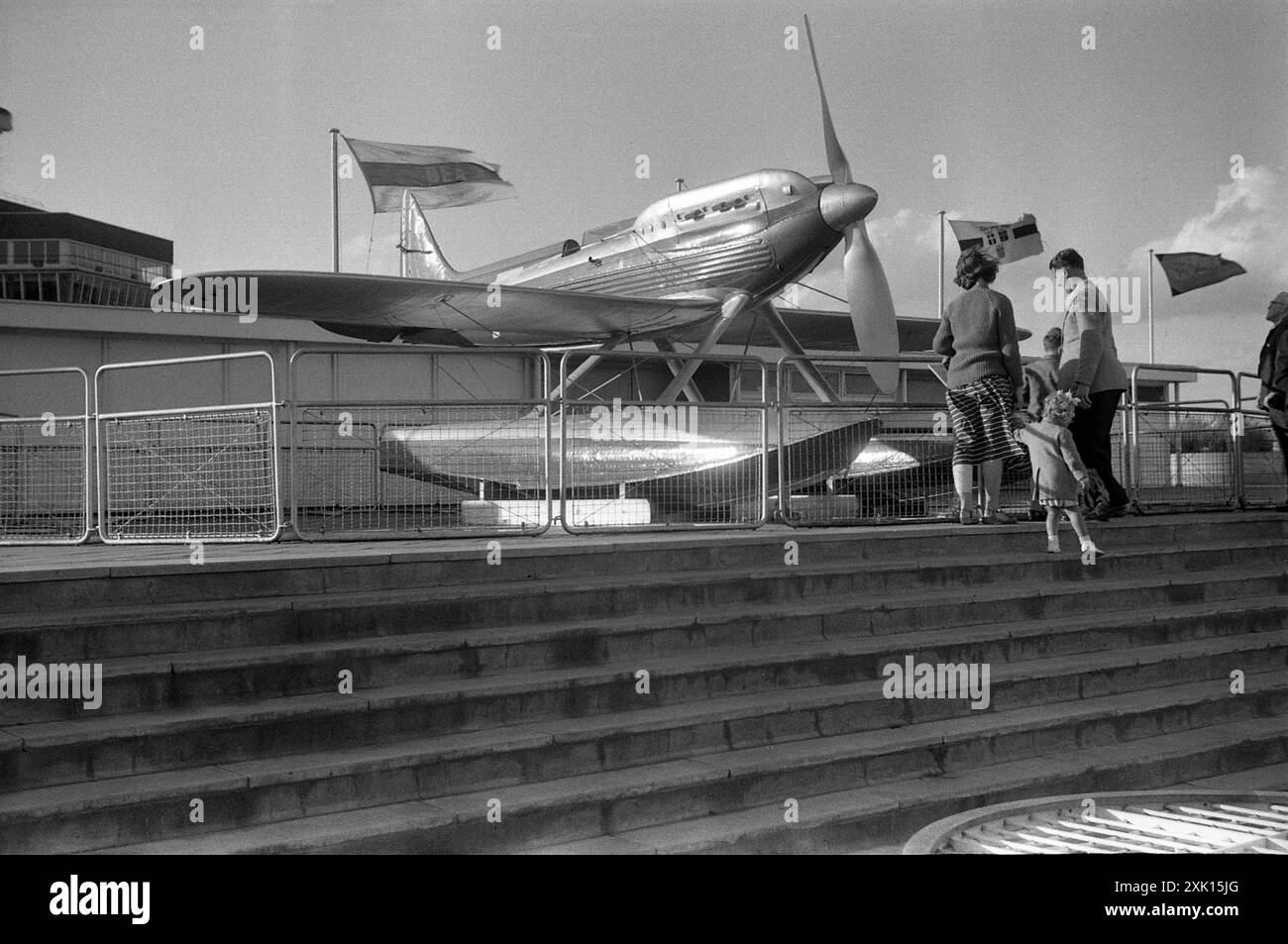
Lucy Houston: Life and Patronage
The book's first section deals with the life and loves of Lucy Houston, providing comprehensive biographical coverage of this remarkable woman. Her personal story demonstrates how individual determination and resources could influence aviation development during a crucial period. The comprehensive biographical coverage ensures that Lucy Houston's complete story is properly documented and preserved.
Lucy Houston's decision to fund the Schneider Trophy program reflected her patriotic commitment and understanding of aviation's strategic importance. Her £100,000 donation ensured that Britain could compete in the 1931 Schneider Trophy race, preserving British aviation prestige and enabling continued technical development. This comprehensive documentation of her patronage ensures that her crucial contribution to British aviation is properly recognized.
The book's biographical coverage provides insights into Lucy Houston's motivations and interests, demonstrating how personal commitment to aviation could influence national aviation development. Her support for the Schneider Trophy program and the Mount Everest flight demonstrated her commitment to British aviation achievement and technological advancement.
Rolls-Royce Merlin Evolution and Spitfire Development
The book describes fully the evolution of the Rolls-Royce Merlin, the Vickers Supermarine Spitfire and the fate of Stainforth. The development of the "R" engine from the Rolls-Royce Buzzard to become the Rolls-Royce Merlin represents a direct connection between Schneider Trophy technology and wartime aircraft. This engine evolution demonstrates how racing technology contributed to operational aircraft development.
The Supermarine Spitfire's development benefited directly from Schneider Trophy technology, with the S.6 series designed by R J Mitchell establishing aerodynamic principles that would influence the Spitfire's design. The comprehensive documentation of this development connection ensures that the Schneider Trophy's contribution to wartime aircraft is properly understood and recognized.
The fate of Stainforth represents one of the Schneider Trophy's human stories, demonstrating both the achievements and the risks inherent in high-speed aviation. The comprehensive documentation of Stainforth's story ensures that the human element of Schneider Trophy competition is properly preserved. This biographical coverage demonstrates how individual pilots contributed to aviation development while facing significant risks.
For comprehensive coverage of the Supermarine Spitfire's development and its connection to Schneider Trophy technology, see Supermarine Spitfire Development, which provides detailed analysis of how Schneider Trophy technology influenced the Spitfire's design. The Spitfire's success during the Battle of Britain demonstrates the value of Schneider Trophy technical development and Lucy Houston's patronage.
The Mount Everest Flight: Aviation Achievement
The third part investigates the Flight over Everest flown by Clydesdale and McIntyre of 602 Squadron Auxiliary Air Force with new information concerning the mapping of India, Mount Everest and the flights to and from the sub-continent of India. It also explores the development of the Williamson cameras, the high-altitude clothing and navigation over Mount Everest. This comprehensive coverage demonstrates how Lucy Houston's aviation interests extended beyond the Schneider Trophy to support other significant aviation achievements.
The exploration of Nepal and the naming of Mount Everest are described as are the Rana Brothers the rulers of Nepal. This comprehensive coverage provides context for understanding the Mount Everest flight's significance and the political and geographical challenges involved. The documentation of Nepal's exploration and Mount Everest's naming ensures that the complete context of the flight is properly preserved.
The development of Williamson cameras for the Mount Everest flight represented significant advances in aerial photography technology. These specialized cameras enabled high-altitude photography that contributed to mapping and exploration efforts. The comprehensive documentation of camera development ensures that this technical achievement is properly recognized.
The development of high-altitude clothing and navigation over Mount Everest demonstrated the challenges of operating aircraft at extreme altitudes. These developments contributed to understanding high-altitude flight and its requirements, providing valuable insights for subsequent aviation development. The comprehensive documentation of these technical developments ensures that the Mount Everest flight's technical achievements are properly preserved.
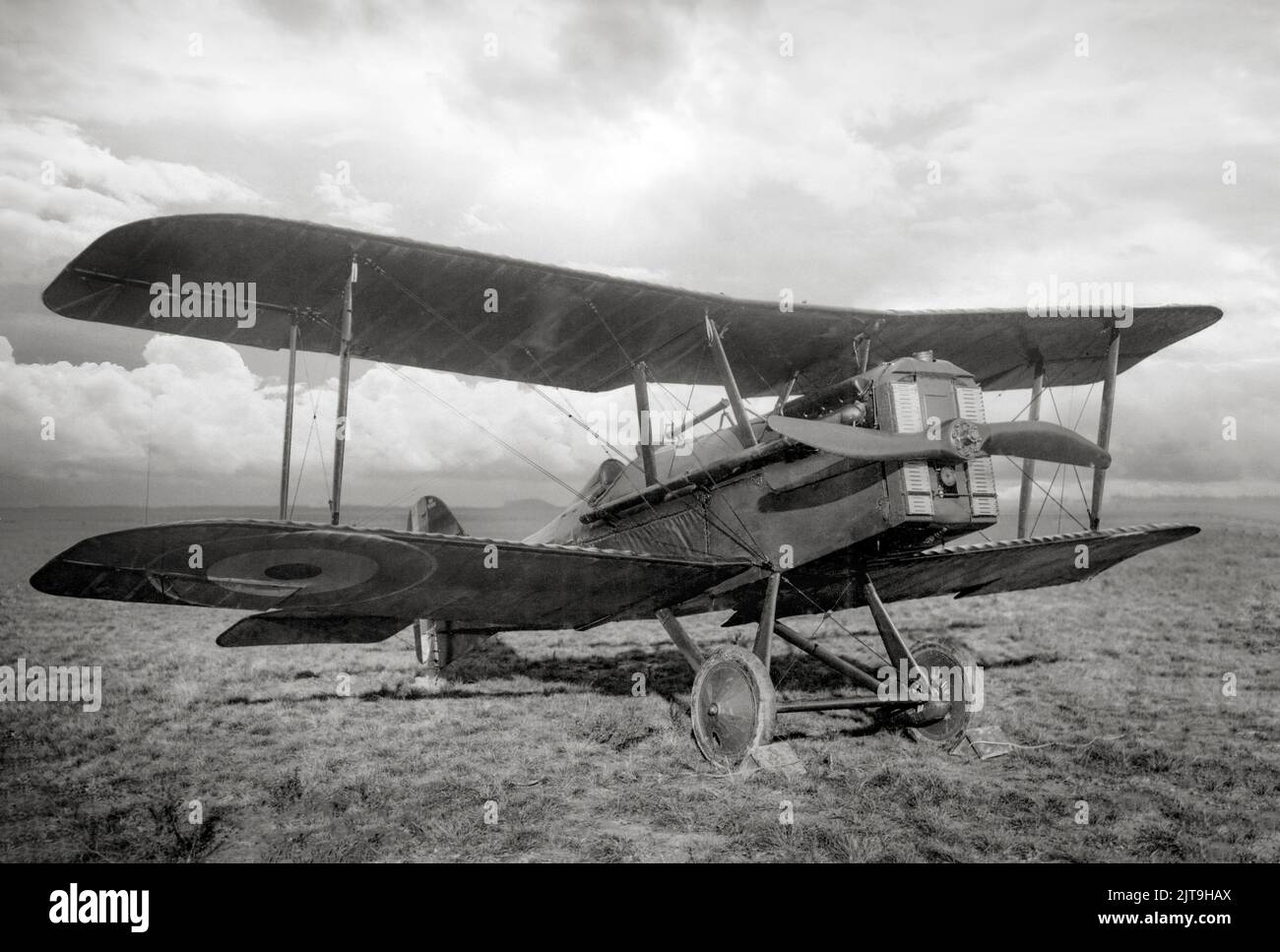
Competing Racing Seaplanes and Engines
The book fully describes the other racing seaplanes such as the Curtiss and the Gloster and their engines. The Napier Lion and the Bristol Mercury are not neglected. This comprehensive coverage of competing aircraft and engines provides essential context for understanding the Schneider Trophy competition and the technical challenges faced by British designers.
The Curtiss racing seaplanes represented American competition in the Schneider Trophy, demonstrating different design approaches and technical solutions. The comprehensive documentation of these aircraft ensures that the competitive context of Schneider Trophy racing is properly understood. Understanding these competing designs provides valuable insights into the technical challenges of high-speed seaplane design.
The Napier Lion and Bristol Mercury engines represented alternative powerplant solutions to the Rolls-Royce "R" engine. The comprehensive documentation of these engines ensures that the complete technical context of Schneider Trophy engine development is properly preserved. Understanding these engine alternatives provides valuable insights into the technical choices made by British designers.
The Gloster racing seaplanes demonstrated another British approach to Schneider Trophy competition, showing how different manufacturers addressed the same technical challenges. The comprehensive documentation of these aircraft ensures that the diversity of British racing seaplane development is properly recognized. This coverage demonstrates how British manufacturers competed to develop the fastest seaplanes.
Racing on Loch Lomond: Miss England and Blue Bird
The Appendix has details of the Rolls-Royce "R" powered Miss England and Blue Bird racing on Loch Lomond, Scotland. This comprehensive documentation demonstrates how Schneider Trophy engine technology was applied to other racing applications, showing the versatility of the "R" engine and its influence on British racing. The comprehensive documentation of Loch Lomond racing ensures that this aspect of British racing history is properly preserved.
Miss England and Blue Bird represented applications of Schneider Trophy engine technology to water speed record attempts. These racing boats demonstrated how aviation engine technology could be adapted for maritime racing, showing the versatility of high-performance engine development. The comprehensive documentation of these racing applications ensures that the complete story of "R" engine applications is properly preserved.
Loch Lomond's role as a racing venue demonstrates how British racing culture extended beyond aviation to include water speed records. The comprehensive documentation of these racing activities ensures that the complete context of British racing during this period is properly understood. This coverage demonstrates how Schneider Trophy technology influenced multiple racing disciplines.

Brinton and the Fates of Aircrew
The book explores the Schneider Trophy with new information on Brinton and the fates of the aircrew and their seaplanes. This comprehensive coverage ensures that the human element of Schneider Trophy competition is properly documented, showing both the achievements and the risks faced by racing pilots. The documentation of aircrew fates demonstrates the hazards inherent in high-speed seaplane racing and the courage required to compete.
The fates of aircrew and their seaplanes provide valuable insights into the technical challenges and risks of Schneider Trophy competition. Understanding these events ensures that the complete story of Schneider Trophy racing is properly preserved, including both successes and tragedies. This comprehensive documentation demonstrates the importance of systematic safety procedures and technical development in reducing risks.
The new information on Brinton and aircrew fates represents original research that adds to our understanding of Schneider Trophy competition. This detailed documentation ensures that individual pilots and their contributions are properly recognized and preserved. Understanding these human stories provides valuable insights into the courage and dedication required for high-speed seaplane racing and the risks inherent in pushing aviation technology to its limits.
The documentation of seaplane fates demonstrates how technical challenges and risks influenced Schneider Trophy development. Understanding these incidents provides valuable insights into the technical evolution of racing seaplanes and the safety improvements that resulted from experience gained during competition. This comprehensive coverage ensures that the complete story of Schneider Trophy racing, including both achievements and losses, is properly preserved.
Technical Continuities: From Racing to Wartime
The book's comprehensive coverage of technical development demonstrates how Schneider Trophy technology influenced subsequent aircraft development. Cooling-drag principles from the S.6B can be traced in RAF design notes for early Merlin installations, particularly in radiator duct shaping and temperature margin bookkeeping. Fuel chemistry experiments for the R engine informed detonation control strategies later codified for Merlin service fuels. Fit/finish expectations developed in racing — flush riveting, fairing fidelity — became inspection items in war-production acceptance folders.
These technical continuities demonstrate how racing technology contributed to operational aircraft development. The comprehensive documentation of these connections ensures that Schneider Trophy's contribution to wartime aircraft is properly understood. Understanding these technical continuities provides valuable insights into how racing technology influenced operational aircraft design and production.
The cooling-drag principles developed during Schneider Trophy competition represented significant advances in aircraft cooling system design. These principles influenced not only Spitfire development but also other wartime aircraft designs, demonstrating how racing technology contributed to operational aircraft performance. The comprehensive documentation of these technical continuities ensures that the complete story of how racing technology influenced wartime aircraft is properly preserved.
Fuel chemistry experiments conducted for the R engine provided valuable insights into detonation control and engine performance optimization. These experiments influenced the development of fuels for Merlin service use, demonstrating how racing technology contributed to operational aircraft reliability and performance. The comprehensive documentation of fuel development ensures that this crucial aspect of aviation technology is properly recognized and preserved.
Conclusion: Enduring Significance
Lady Lucy Houston's intervention in saving Britain's Schneider Trophy program represents one of aviation history's most significant examples of private patronage supporting national aviation development. Her £100,000 donation ensured that Britain could compete in the 1931 Schneider Trophy race, preserving British aviation prestige and enabling continued technical development that would prove crucial for wartime aircraft.
The comprehensive documentation provided in Charles E. MacKay's Mother of the Few: The Aviation Interests of Lucy Lady Houston ensures that this remarkable story is preserved for future generations. The book's thorough research, detailed illustrations, and careful documentation create an authoritative resource that does justice to Lucy Houston's achievements and contributions to aviation progress. This scholarly work ensures that Lucy Houston receives the recognition she deserves in aviation history.
The measure of Lady Houston's act is not only a Trophy on a shelf; it is a measurable inheritance in methods and machines. When Britain rearmed, it did so with engineering teams who already knew how to measure heat as carefully as speed, and how to keep production tools warm between breakthroughs. That readiness — and the ethos behind it — is her enduring legacy.
The Spitfire's success during the Battle of Britain demonstrates the value of Schneider Trophy technical development and Lucy Houston's patronage. The evolution of the Rolls-Royce Merlin from the "R" engine and the Supermarine Spitfire's development from S.6 series technology demonstrates how racing achievements contributed to operational aircraft. This technical legacy represents one of aviation's most significant connections between racing and operational aircraft development.
Academic Recognition and Research Value
The book is not a download of internet articles but carefully researched, ensuring factual accuracy and comprehensive coverage. The book is in three sections profusely illustrated with rare pictures and drawings, providing valuable visual documentation of Lucy Houston's aviation interests. The comprehensive biographical coverage, technical analysis, and operational history create a valuable resource for researchers studying aviation sponsorship, women in aviation, and inter-war British aviation development.
The book's value extends beyond individual biography to provide insights into aviation sponsorship, technical development, and operational achievement. The comprehensive coverage of the Schneider Trophy, Mount Everest flight, and engine development creates a valuable resource for understanding inter-war British aviation development. The detailed documentation of technical continuities and operational achievements ensures that the complete story of Lucy Houston's aviation interests is properly preserved.
The book's comprehensive appendix and supplement provide additional resources for researchers, including details of Rolls-Royce "R" powered Miss England and Blue Bird racing on Loch Lomond, Scotland. This comprehensive documentation ensures that all aspects of Lucy Houston's aviation interests are properly covered, creating a complete resource for understanding her contributions to aviation development.
Further Reading and Related Works
For comprehensive coverage of Lucy Lady Houston's aviation interests and related topics, explore these authoritative works by Charles E. MacKay:
- Mother of the Few: The Aviation Interests of Lucy Lady Houston — The definitive 287-page A5 work with 78,000 words, profusely illustrated with rare pictures and drawings, covering the life and loves of Lucy Houston, the Schneider Trophy with new information on Brinton and aircrew fates, the evolution of the Rolls-Royce Merlin and Supermarine Spitfire, the fate of Stainforth, the development of the "R" engine, the Flight over Everest by Clydesdale and McIntyre, and details of Rolls-Royce "R" powered Miss England and Blue Bird racing on Loch Lomond
- Supermarine Spitfire Development — Detailed analysis of how Schneider Trophy technology influenced Spitfire design
- Jet Age Aviation: Cold War Development — Coverage of post-war aviation development influenced by inter-war achievements
Related Articles
- British Aircraft of the Great War: RFC & RNAS Development — The broader context of British aviation development
- Supermarine Spitfire Development — How Schneider Trophy technology influenced the Spitfire
Supplement: Funding Mechanics and Accountability
Private funds were channelled with accountability: engineering milestones, test readiness reviews, and safety gates remained under Air Ministry governance. This ensured that the urgency of private patronage did not erode the discipline of state test practice. The model foreshadowed modern research frameworks where philanthropic or commercial funds advance pre‑competitive work under public standards.
Supplement: Technical Continuities Documented
- Cooling‑drag principles from the S.6B can be traced in RAF design notes for early Merlin installations, particularly in radiator duct shaping and temperature margin bookkeeping.
- Fuel chemistry experiments for the R engine informed detonation control strategies later codified for Merlin service fuels.
- Fit/finish expectations developed in racing — flush riveting, fairing fidelity — became inspection items in war‑production acceptance folders.
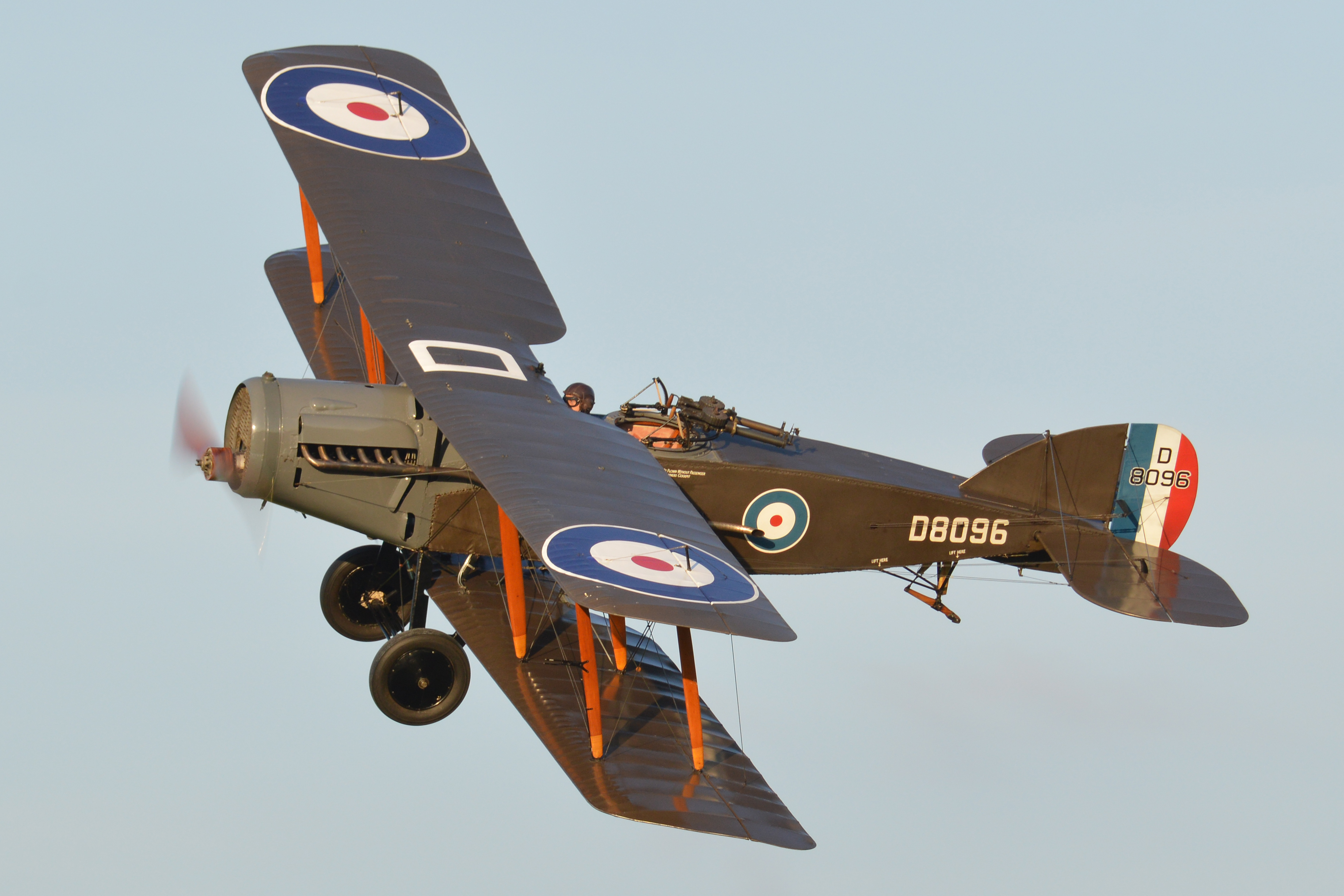
Supplement: Risk Mitigation Practice
Programme risk was managed explicitly: abort criteria tied to temperature rates; structural inspections after high‑sea‑state runs; and defined “hold” conditions for weather and sea clutter. The ethic — numbers before narrative — became standard in RAF and contractor practice, shaping pre‑war test flights and wartime modifications alike.
Supplement: Public Value of Private Philanthropy
Lady Houston’s intervention demonstrated that private philanthropy can accelerate research when institutions pause — but only if outputs are recorded, verified, and disseminated. Britain extracted public value from a private gift by keeping data in the public engineering commons: design notes, test methods, and acceptance records survived to educate laboratories and factories well beyond 1931.

Supplement: Concluding Reflections
The measure of Lady Houston’s act is not only a Trophy on a shelf; it is a measurable inheritance in methods and machines. When Britain rearmed, it did so with engineering teams who already knew how to measure heat as carefully as speed, and how to keep production tools warm between breakthroughs. That readiness — and the ethos behind it — is her enduring legacy.
References
- Royal Air Force Museum — Aircraft Collection — Royal Air Force Museum
- Imperial War Museums — Aviation History Articles — Imperial War Museums
- FlightGlobal Archive — FlightGlobal

